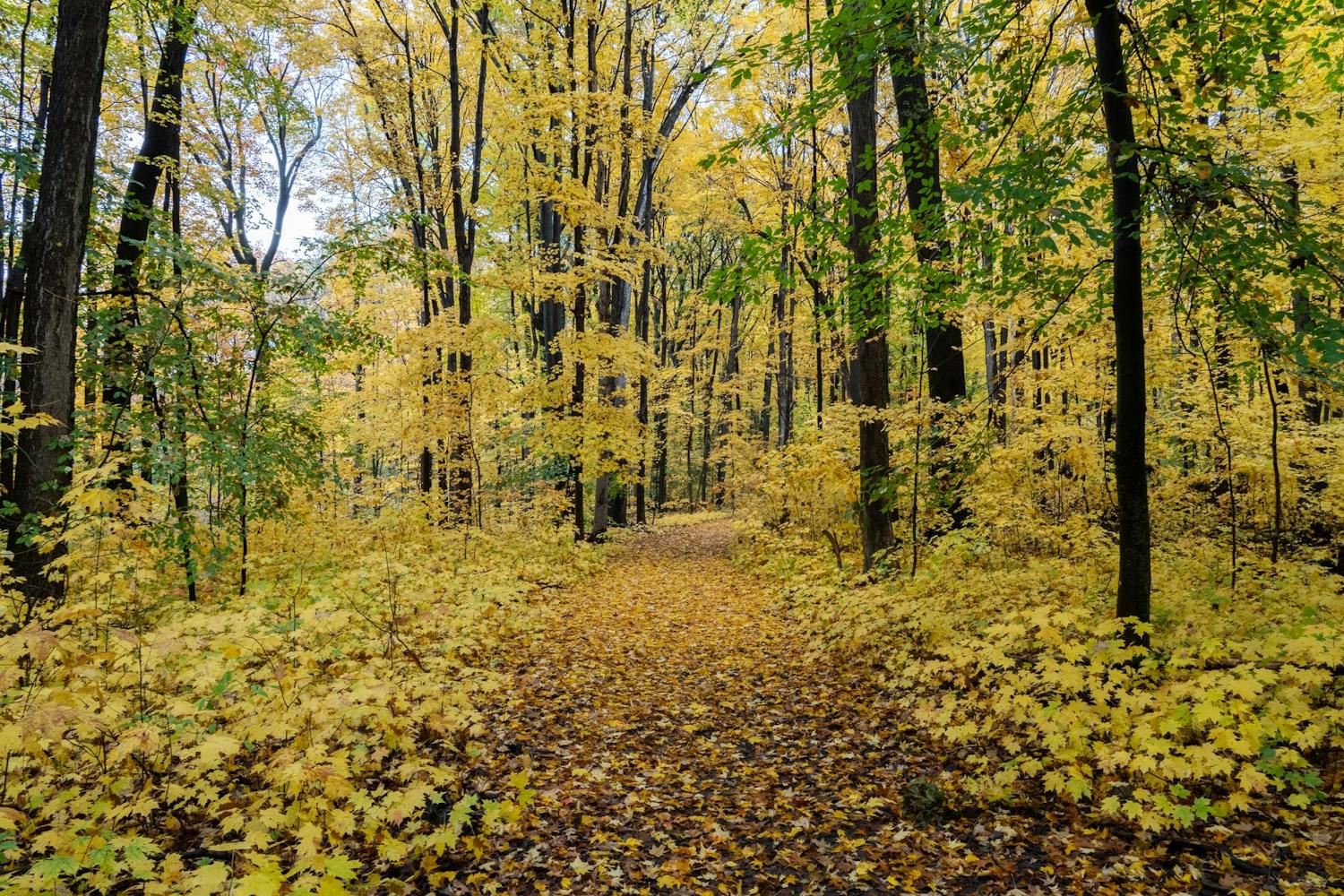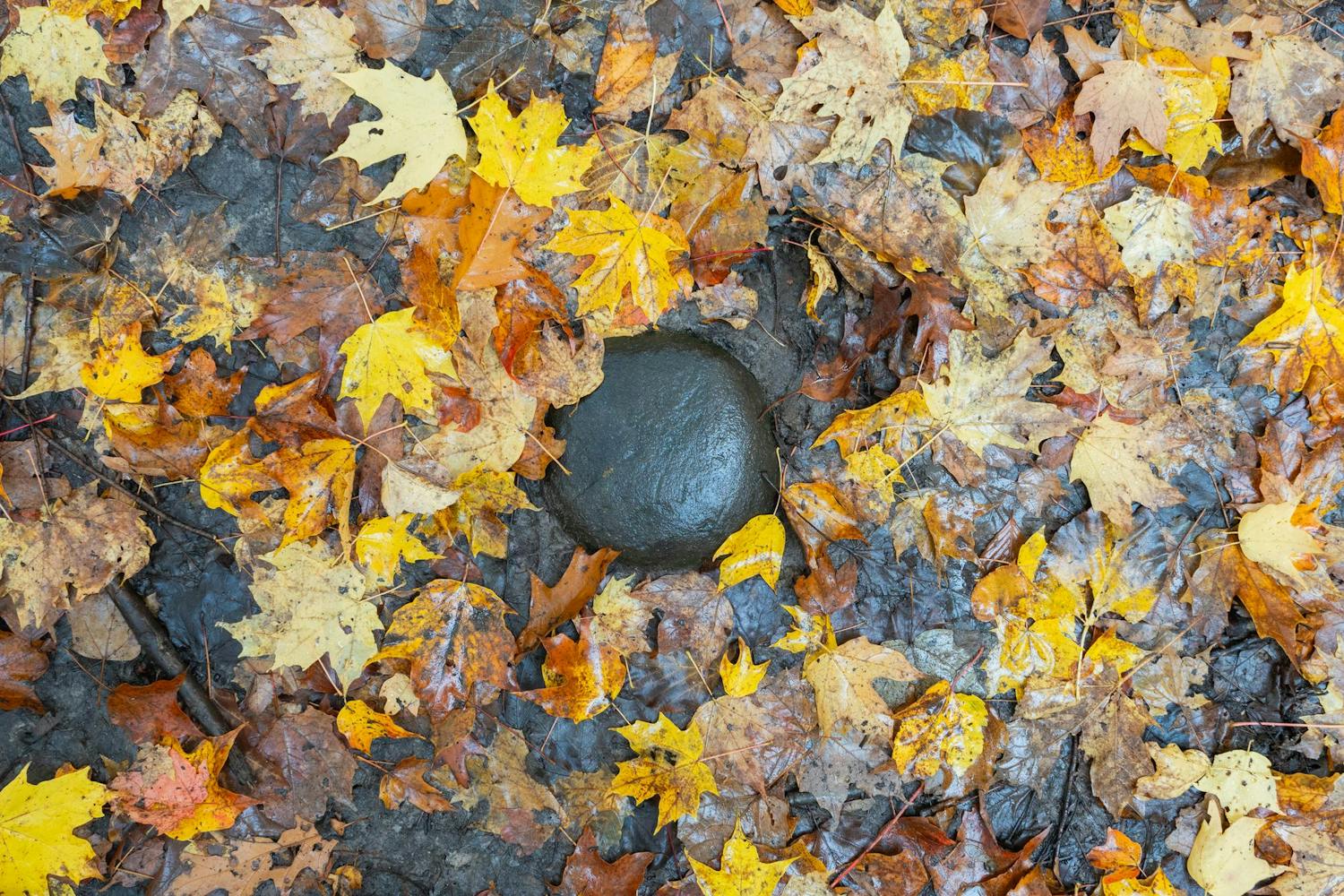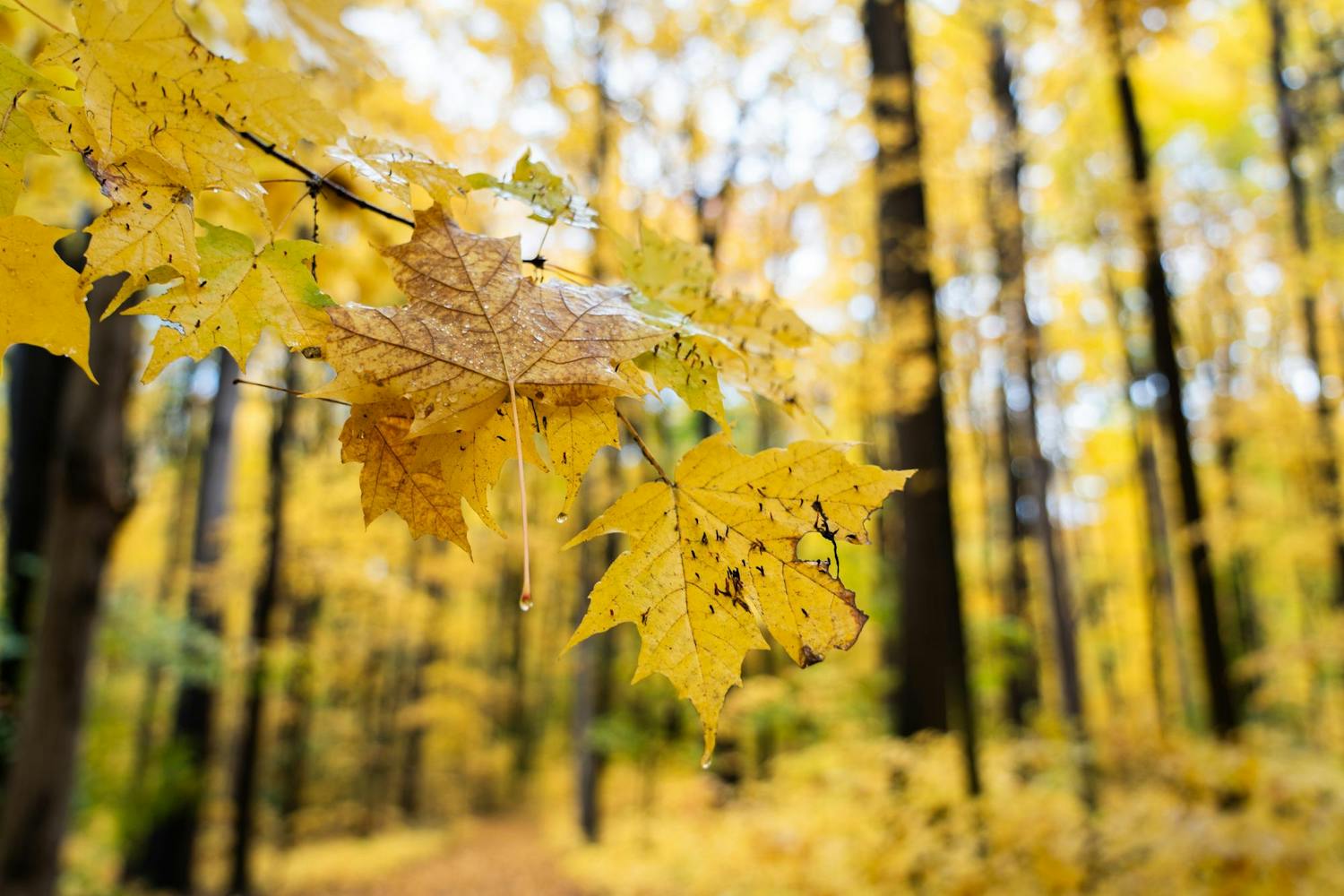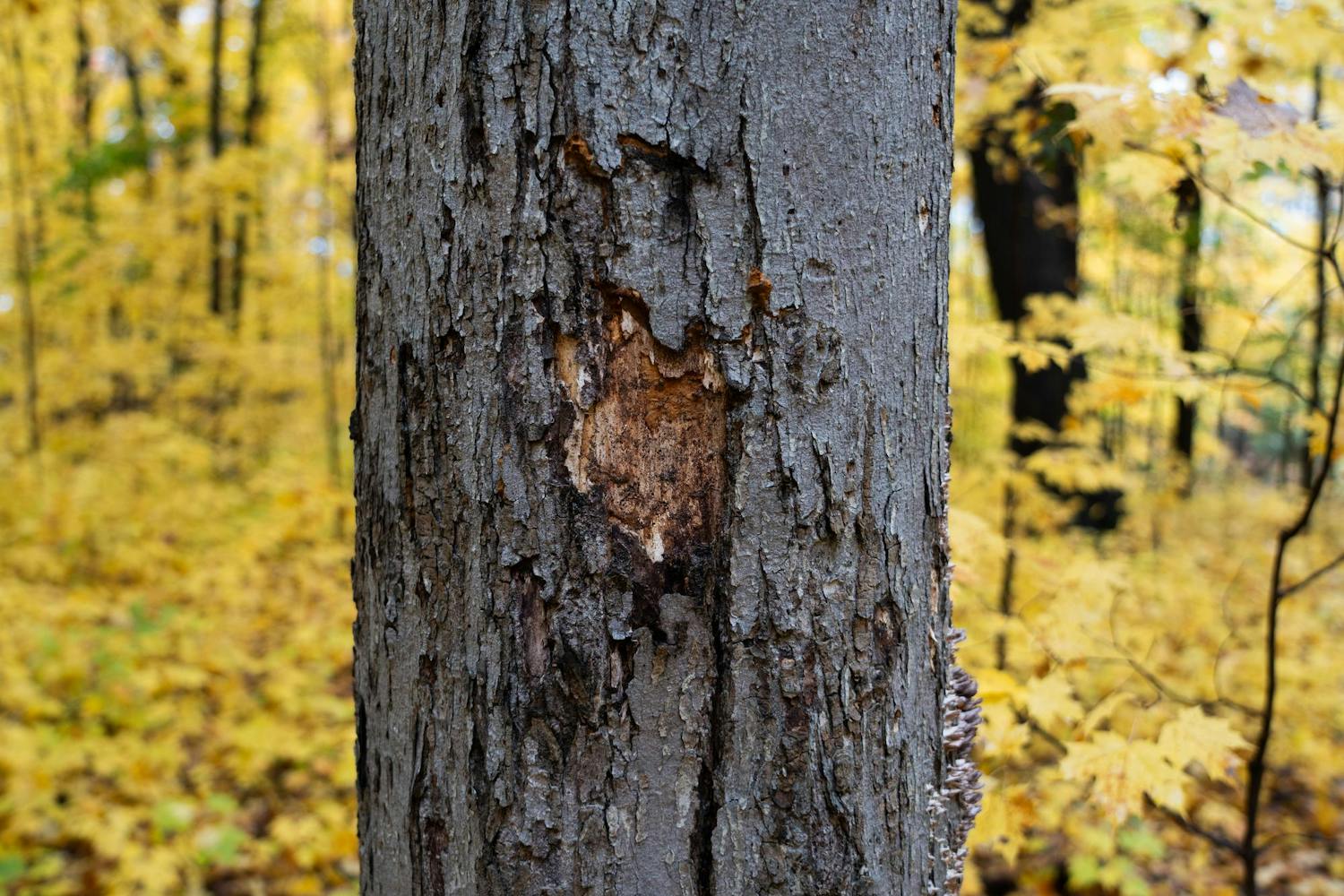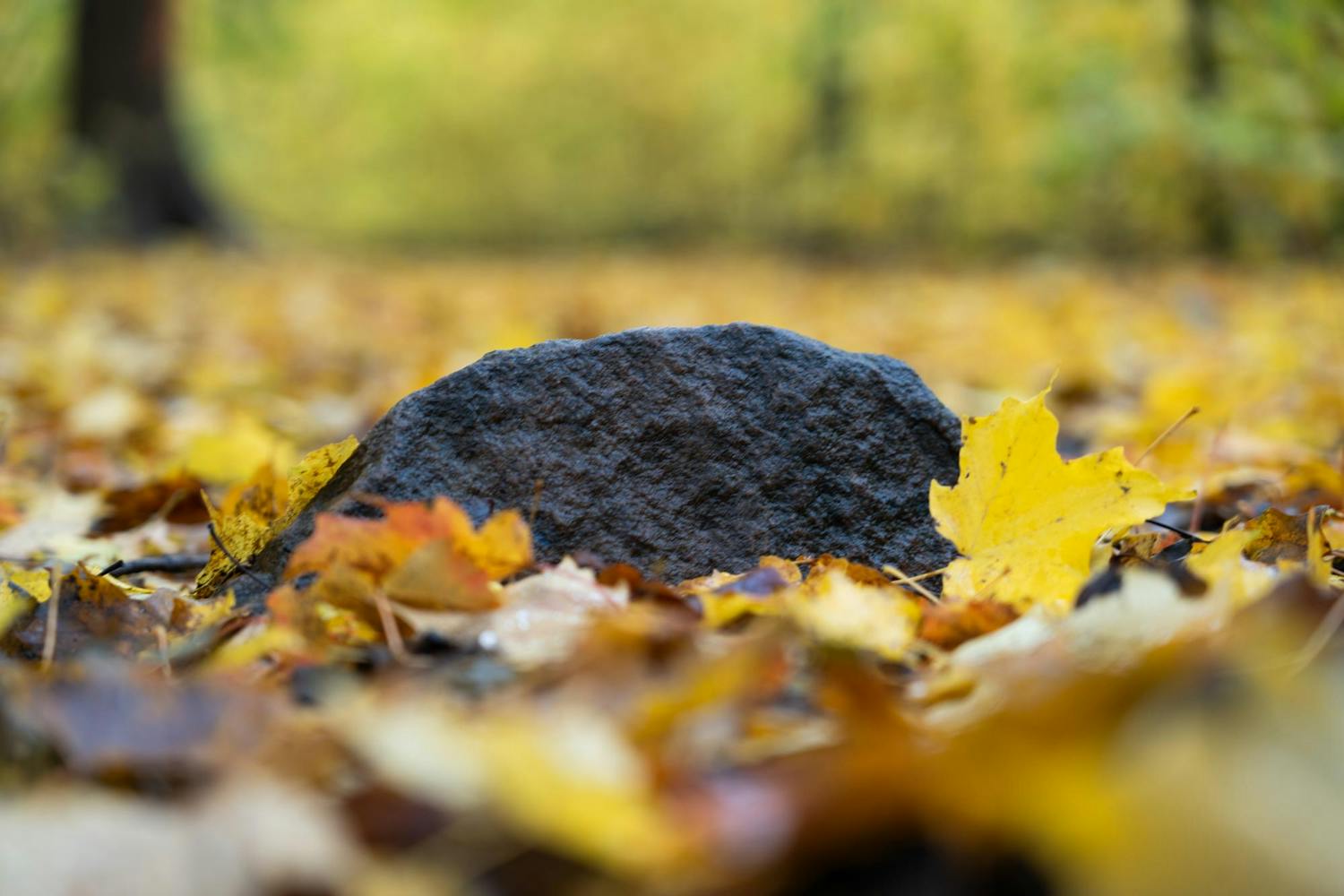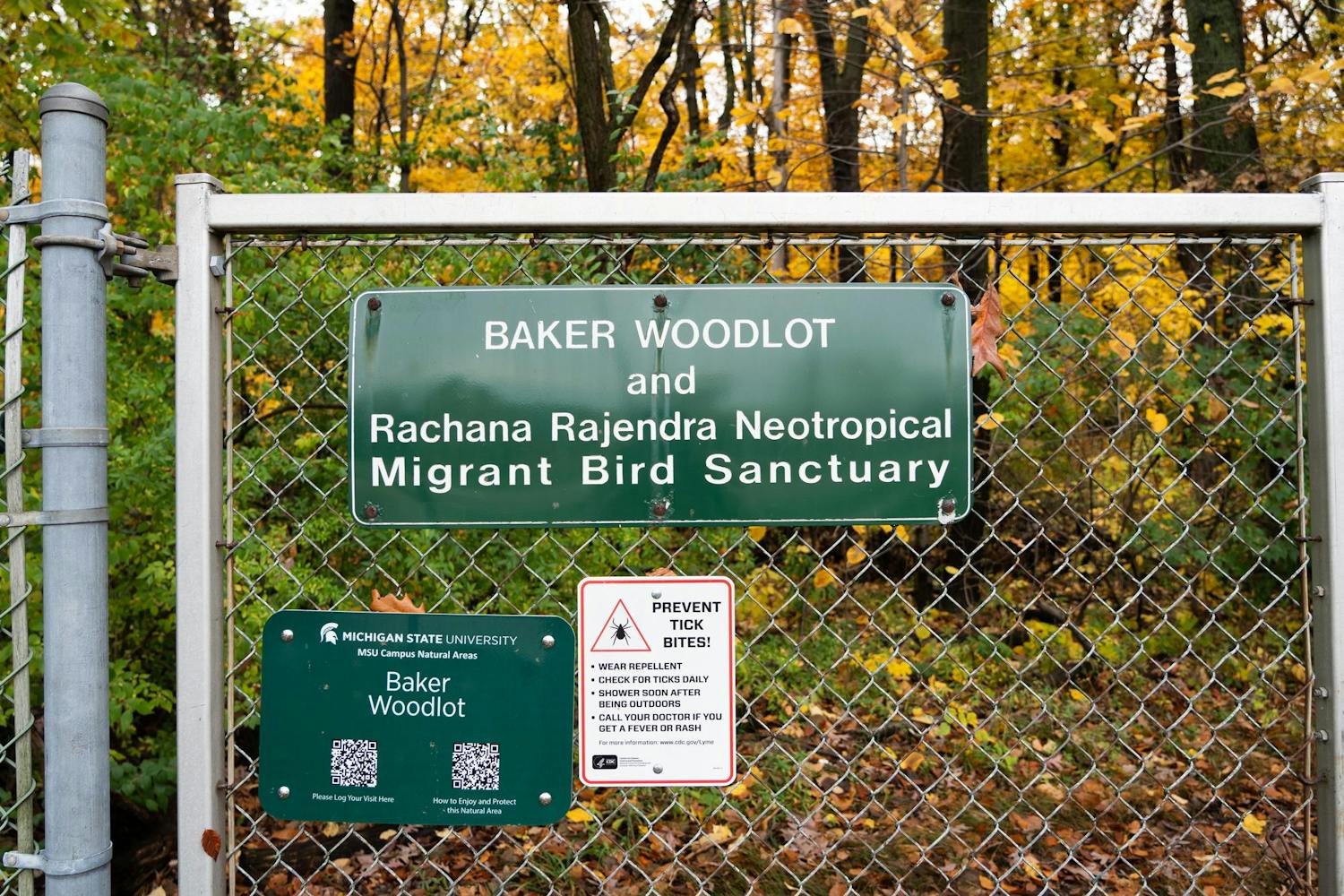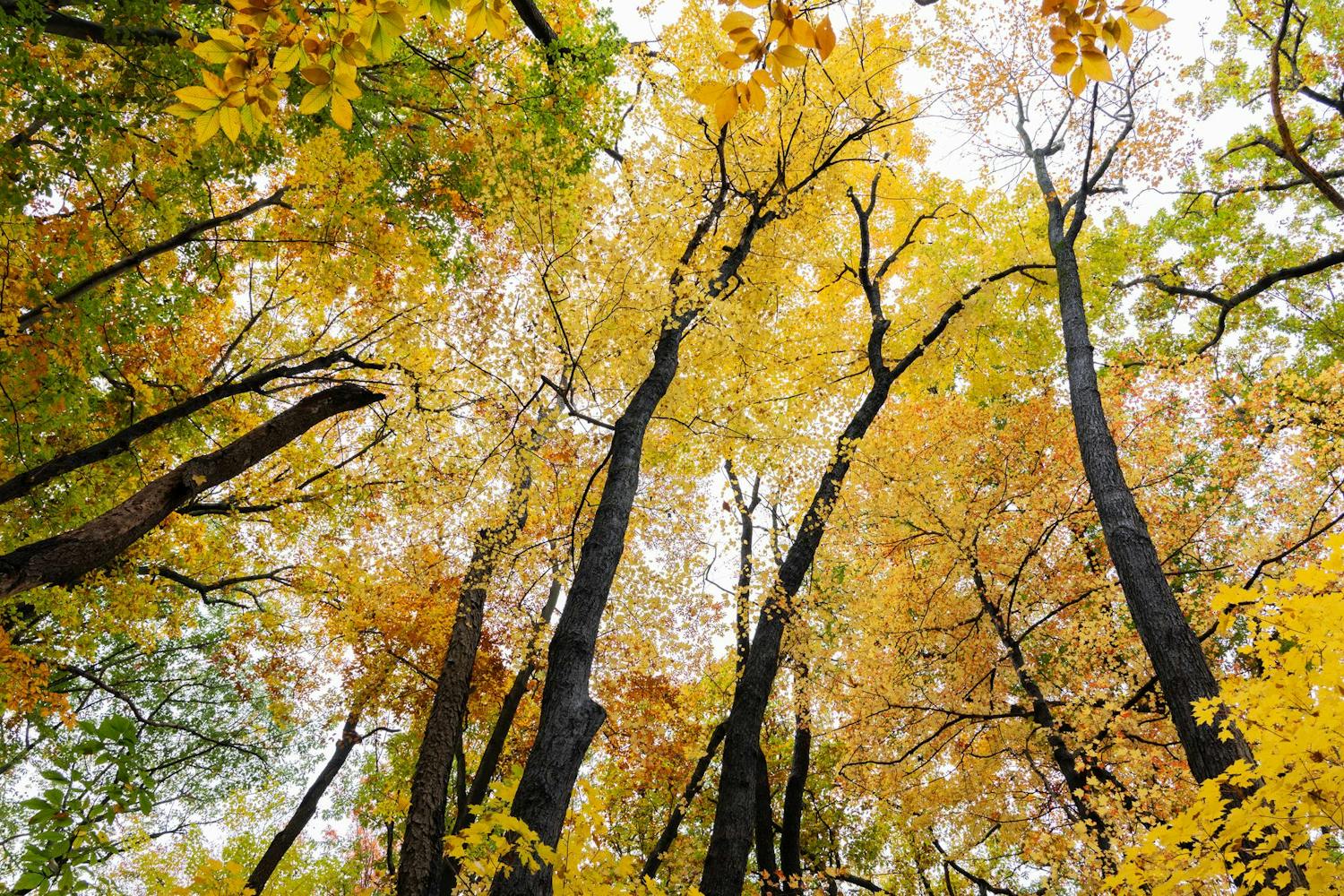Baker Woodlot, a 73-acre natural forest area in the south section of campus, was inducted into the Old-Growth Forest Network on Oct. 7, becoming the 12thforest in Michigan to become a part of the national network of old-growth forests.
Baker Woodlot, located on the southeastern corner of Farm Lane and Service Road, was officially recognized by the OGFN, a registered nonprofit organization founded in 2007 with the goal of locating and protecting forests in every county in the nation.
An old-growth forest is an undisturbed population of trees that are approaching their maximum life span. These types of forests vary from region to region but all of them are typically relatively undisturbed.
Indicators include multilayered canopies, large trees, standing dead trees, gaps in the canopy which indicate single tree falls and woody debris in varying stages of decay on the forest floor.
“If you were curious about what an older forest looks like in any given state, we are building a map to allow you to do that,” OGFN Network Manager Nick Sanchez said.
He also oversees the Midwest region of the U.S. and spoke at the induction event for the woodlot.
Sanchez said the OGFN is dedicated to identifying and protecting old growth forests wherever they may be, adding that their efforts are "not just the redwoods and it’s not just Olympic national park."
"Old growth forests are important everywhere," Sanchez said.
While there are 11 other recognized old-growth forests in the state of Michigan, Baker Woodlot is unique in that it is the first old-growth forest on a college campus.
“I say over and over again how lucky those of us are at Michigan State University because of our campus landscape that is beautifully maintained for sustainability," Alan Prather, interim director of the W.J. Beal Botanical Gardens and a current member of the Campus Natural Areas Classroom, Campus and Conservation Committee, said.
Prather said that on top of the large natural areas system, the campus also has a huge system of gardens that add to the biodiversity of the campus.
"I can’t think of another place in the world with that level of opportunities for its students,” Prather said.
MSU is currently home to 25 natural areas. These are areas reserved for educational, research and recreational purposes. They are overseen by the Campus Natural Areas Classroom, Campus and Conservation Committee, or CNA3C, a panel of faculty members in natural science and resource management disciplines.
This committee decides how these natural areas are to be used and maintained by faculty, students and the general public.
Induction into the OGFN will not change how Baker Woodlot is maintained aside from the typical trail management or upkeep needed to keep the space accessible to the public.
Baker, along with every other campus natural area, is protected from new developments on or around the designated area that would cause a disturbance.
Prather said the induction of an MSU woodlot into the OGFN underscores the dedication and willingness of foresters and researchers to preserve and study the planet’s natural systems.
“I’d really like to highlight that when it comes to research, having these natural areas is critical and the research that has been published while using these lots is really remarkable," Prather said.
Support student media!
Please consider donating to The State News and help fund the future of journalism.
Discussion
Share and discuss “Baker Woodlot inducted into national network of old-growth forests” on social media.
